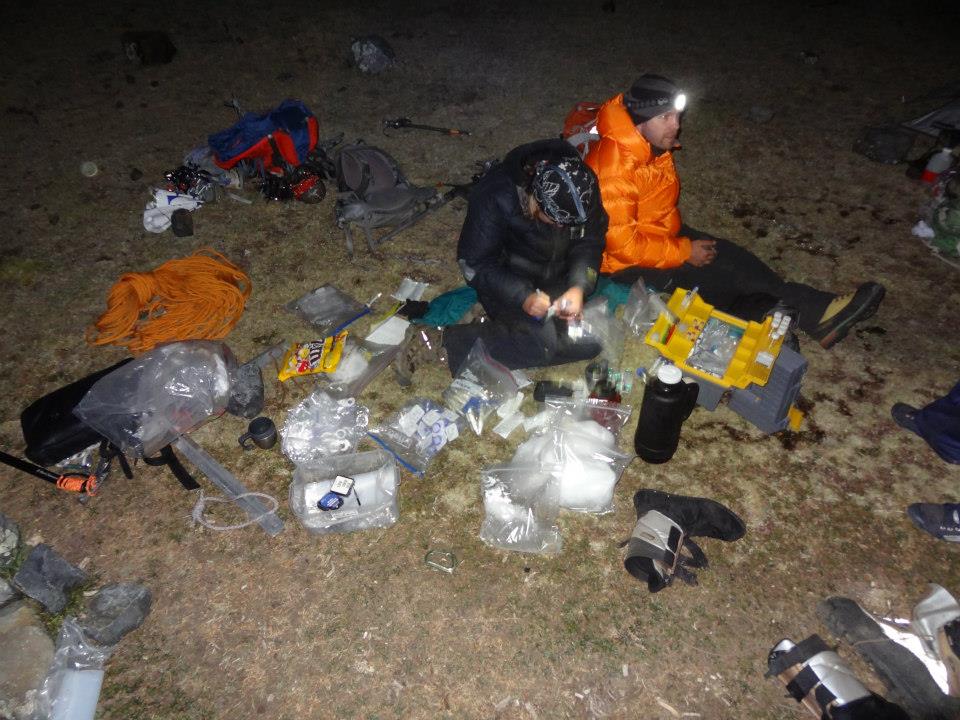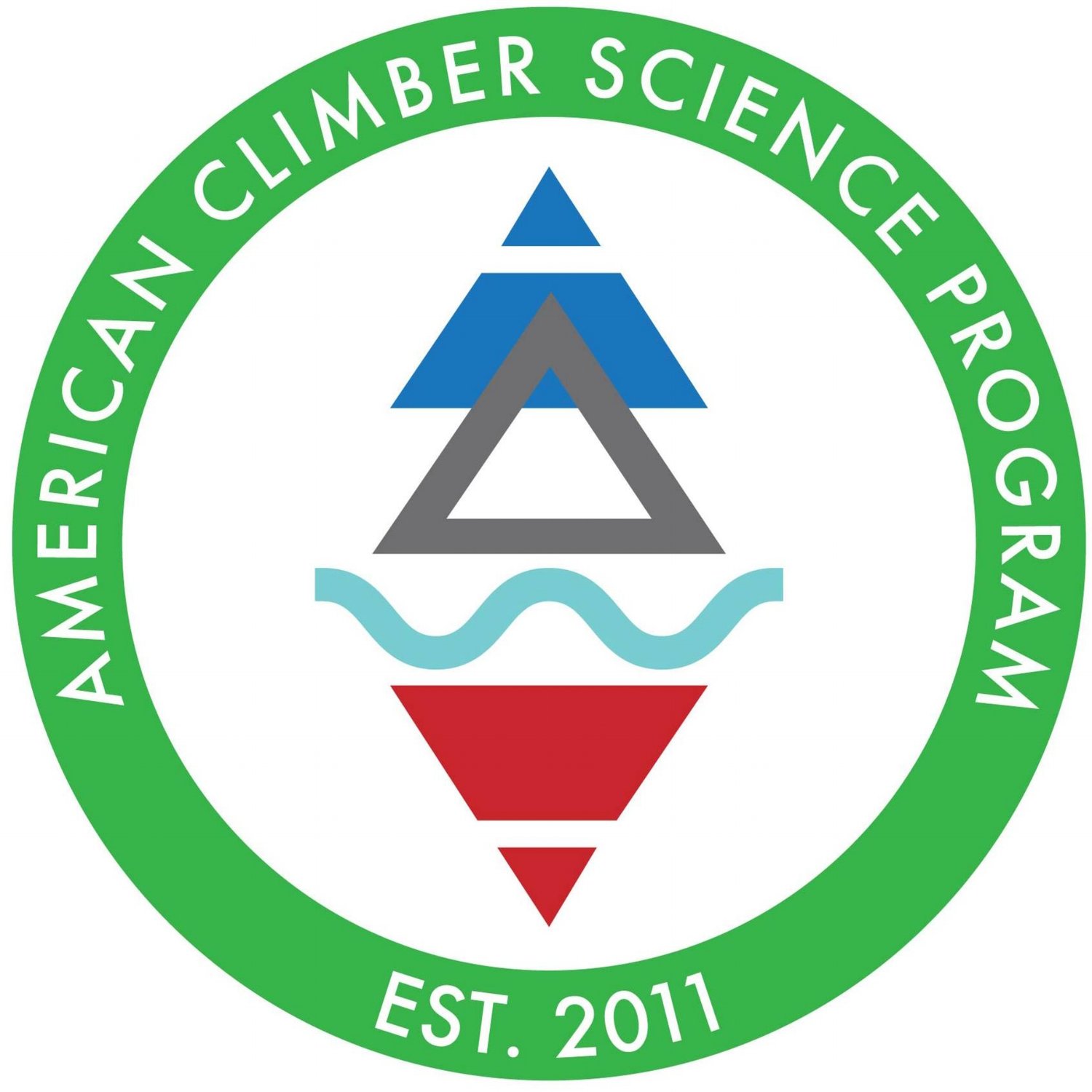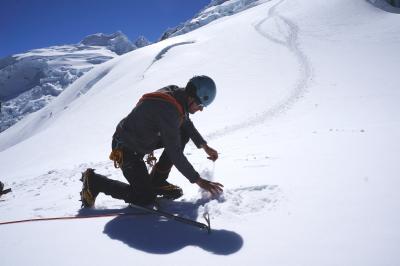Glaciers in the tropical Andes have been melting at an alarming rate since the 1950s. Light absorbing particles on glacier surfaces may have been contributing to increases in melt rates. The goal of the black carbon research is to determine the types and amounts of light absorbing particles make it into the snowpack.
Black carbon particles, created by the burning of fossil fuels as well as forest and agricultural burning can easily fall onto the surface of glaciers. Black carbon particles can also be swept up by falling snow and deposited onto glacier surfaces. Because black carbon easily absorbs sunlight, these particles cause the glacier ice to melt faster than it would otherwise. Measurements of black carbon begin with the collection of snow samples on the mountains. These snow samples are then returned to basecamp for processing. In camp, snow samples are melted then passed through filters which collect the black carbon and other particles. Filters will be analyzed to determine the particle types and amounts that have accumulated in the snow. These results will enable us to better understand the factors behind current and future glacier ice loss.
A recent publication (http://www.atmos.albany.edu/facstaff/mathias/pubs/Schauwecker_et_al_2014...) showed that both the temperature and the precipitation have been increasing in the Cordillera Blanca region of Peru. To paraphrase their findings, the temperature change in combination with the precipitation increase may not fully explain the extent of the recent glacier recession. ACSP research in the region suggest that an increase in light absorbing particles on the glaciers may be partially to blame. More research is needed to fully understand the role of light absorbing particles.
The "Black Carbon" or "light absorbing particles" on snow research project has been an important part of all glacier related ACSP expeditions. There are two published journal articles detailing the results of our work to date.





